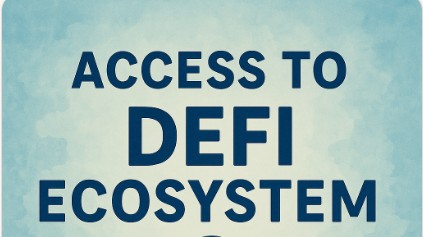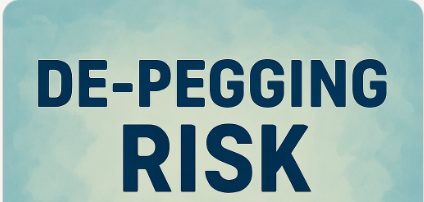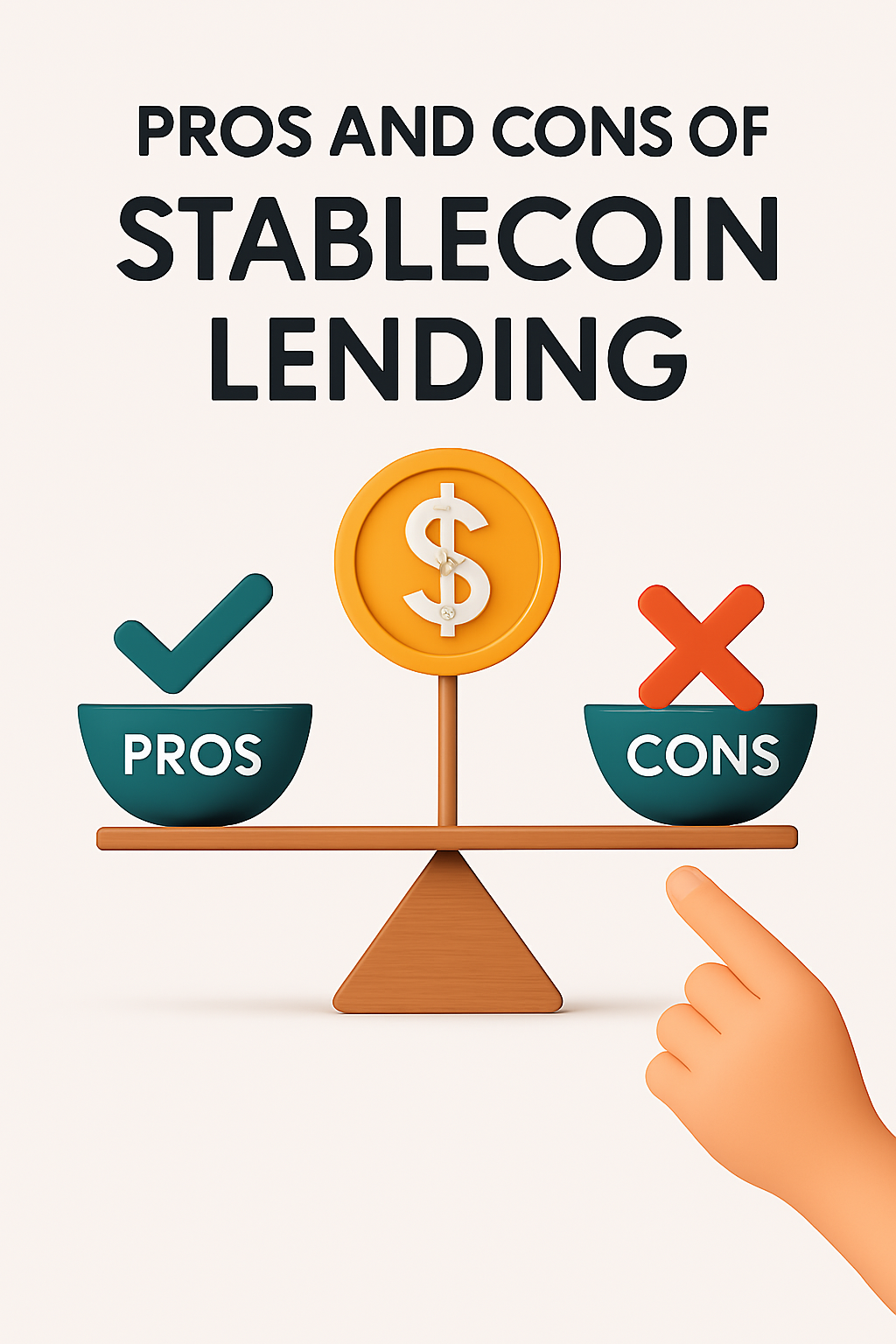I will explain the Pros and Cons of Stablecoin Lending in this article. Similar to other aspects in the world of cryptocurrency, stablecoin lending can serve as an effortless source of income but also comes with considerable risks.
One must evaluate both the benefits and the risk factors associated with stablecoin lending in order to create an appropriate strategy when acquiring or investing in stablecoins.
Pros of Stablecoin Lending
1. Low Volatility
As stablecoins are tied to fiat currencies like the dollar, their value stays relatively unchanged over time. This also significantly reduces the risk posed by price drops which are commonplace during market downturns in traditional crypto.

Stemming from this volatility, investors are able to lend without the fear of the underlying asset losing considerable value.
This makes stablecoins a dependable choice for crypto investors, remaining less susceptible to extreme market fluctuations.
2. Passive Income
Through interest earnings, users are able to passively earn through lending their stablecoins. Be it through DeFi protocols or centralized exchanges, users can deposit their stablecoins and earn interest on a regular basis.

Such yield generation is appealing towards long-term holders of stablecoins who prefer a more hands-off investment approach.
The returns generated through stablecoin lending provide a favorable stance among low-risk opportunities, attracting income-focused investors in the volatile digital asset market.
3. Transparency
Most Decentralized Finance (DeFi) protocols operate publicly, which signifies that users can note the history of every transaction alongside the contribution of each contract as public information.

Users can make sure of account verifiability business intelligence trustworthiness considers, rational interest and funding rates, and calculated performance margins.
Trust maintains complete visibility on-chain processes which is a key feature as opposed to dirty opaque banking systems. Hence, users can make intelligent decisions based on facts that matter as people refer to credibility in other systems.
4. Liquidity
The market keeps a keen eye and high trade volume on Stablecoins, making them loose, financially manageable in a considered investment.
For lenders, this implies that they can put in, withdraw, or shift their funds at any given time without enduring a prolonged waiting period or downside risk.

In times of intense market activity or volatility, the level of funds present in the market enables smooth lending transactions on both centralized trade networks and DeFi platforms.
Withdrawal readiness features the use of primary capital stay at the disposal for the limits financial flexible users stranded at position need.
5. Lower Entry Barrier
To get started with stablecoin lending, there is no need to convert to fiat or step into the banking system. This fosters ease of access for new participants in the cryptocurrency economy.

One simply needs a crypto wallet and some stablecoins to start lending. Compared to traditional finance, the processes associated with lending and borrowing cryptocurrencies are much more straightforward and accessible.
The simpler, less restricted nature of these processes allows a wider range of people across the world to engage with blockchain-based financial services.
6. Global Reach And Accessibility
The use of stablecoins is not geographically limited, allowing users to lend or borrow without requiring a bank. The absence of credit history or currency barriers means no geographical hindrances.

Residents of developing countries or even regions with little access to banking facilities find stablecoin lending beneficial as it only requires internet access.
Such characteristics help towards improving access to finance, which in turn emphasizes the strength of decentralized finance for the unbanked and underbanked across the globe.
7. Access to DeFi Ecosystem
When users lend out stable coins it enables them to interact with a more advanced DeFi ecosystem that features tools such as decentralized exchanges, liquidity pools, and yield aggregators.

These services implement sophisticated financial practices that extend past traditional saving. Participating in DeFi further exposes one to innovation such as governance tokens and protocol advancements.
Stablecoin lending acts as an entry point into the fast growing ecosystem, enabling users to harness the advantages of decentralized finance without the volatility associated with other crypto assets.
8. Flexible Terms
There are many platforms that let users decide from a range of lending options that include a fixed and variable interest rate as well as different lock-in periods.

This particular feature enables individuals to adjust their investment strategies according to their goals and risk tolerance. If you desire stable, predictable returns, or if you do not mind fluctuations, there is usually a lending product that accommodates every strategy.
Flexibility of this nature is uncommon in traditional banking and is a major factor attracting users to the stablecoin lending domain.
9. Portfolio Stability
Integrating stablecoins into a portfolio can increase stability while reducing portfolio volatility exposure. Because stablecoins maintain a constant value, they can protect value from the damage that highly volatile assets like Ethereum or Bitcoin inflict.

By lending stablecoins, users are able to earn yield while managing their investment risk. This is a balanced approach to cryptocurrency lending.
It helps capitalize during market slumps but also enables preserving during downturns, all while maintaining participation in the economy through steady income.
10. Capitalize on Income Generation Opportunities
The majority of platforms allow interest accrued from lending a stablecoin to be reinvested automatically. This self-sustaining process can heighten earnings greatly over time. Rather than actively withdrawing and redepositing, users can automate the growth of their portfolio.

Inadequate interest rates can accumulate over long-term strategies where the goal is building wealth, aiding in further elevating value in the form of compounding returns.
In times like these, stablecoin lending becomes an appealing investment for risk-averse individuals seeking to grow their wealth.
Cons of Stablecoin Lending
1. Smart Contract Risks
DeFi lending platforms use smart contracts, which are coding systems that automate certain functions. Contracts like these, especially in the world of DeFi, can carry risk as funds are subject to loss without recovery through a proper mechanism.

These contracts can be hacked or contain other shortcomings which, in a worst case scenario, can lead to losing money that can be neither retrieved. Even the most competent platforms with fully audited smart contracts don’t come without risk.
2. Centralization Risk
Most well known stablecoins such as USDT and USDC are owned by centralized entities. These issuer organizations can freeze accounts, change rules, or face regulators.

Operational or technological problems, along with potential stagnation of the economy, causes center controlled entities to struggle with stability of funding and usability of the asset.
Regardless of regulations or policy these regulators face, stablecoin value is largely impacted, posing even more risk for stablecoin lenders.
3. Counterparty Risk
Trust issues arise when lending on centralized platforms. Users trust that a given platform will take care of borrower defaults and manage orderly withdrawals from the platform. If a borrower defaults, or if the platform goes under, lenders could lose their money.

Some platforms offer insurance or some sort of collateral but that is not always the case. Such dependence on these tertiary parties creates counterparty risk which can severely damage the safety and reliability of stablecoin lending, especially when dealing with poorly managed and unregulated platforms.
4. Regulatory Uncertainty
Stablecoin lending operates within a dynamic context of regulations. Global jurisdictions are yet to specify how stablecoin and DeFi systems should function within legal frameworks. Future restrictive regulations could be put in place for lending, tax, or sophisticated compliance requirements.

This creates risks for users as platforms may be forced to shut down, change business models, or restrict access based on laws of an arbitrary region. Such changes in legislation would most undoubtedly affect user’s returns and accessibility.
5. Yield Compression
With more users swapping to stablecoin lending because of its relative safety, competition rises. This decreases interest rates, particularly on major platforms where supply frequently outstrips demand.

Over time, the returns from lending stablecoins may become inadequate due to the risks involved. Yield compression curbs income potential, exacerbating the challenge for investors attempting to sustain meaningful returns, especially in bear markets or during periods of constricted capital flows.
6. Platform Risk
Centralized and least decentralized platforms expose crypto users to operational, security, or insolvency risks. Users may suffer from withdrawal delays or total fund loss if the platform goes under. This platform risk is particularly acute for new or still unaudited services.

Because crypto exists in a largely unregulated space, there is usually limited fallback when things go wrong. Researching the platform’s past, including its disclosure policies and protections available to users, is vital before putting in money.
7. The Risks With Stablecoins Maintain Value.
Stablecoins are cryptocurrencies designed to maintain a constant price, typically set to $1, which can limit its investment upside. The risk is reduced, however, capital appreciation isn’t an option either.

In this case, earnings are made from interest payments instead. Corresponding yield works differently owing to the risk undertaken. In comparison, holding volatile cryptocurrencies earns one higher returns through price gains.
These profit expectations are partially available through stablecoin lending, although stablecoins tend to feel more conservative in nature. Lending aids in making profits, albeit restricted in nature.
8. De-pegging Risk
Stablecoins are tethered to fiat balances. This linkage can sometimes break even during times of currency panic or market sweep as a result of faulty technology or liquidity problems.
Losing tether temporarily or permanently can cause losses and is risky especially if the stablecoin value plummets significantly.

This risk is real as evident during the phase USDC briefly lost its dollar tether since the lenders who depend heavily require stable coins lose all the funds if tethering takes place.
9. Liquidity Pool Imbalances
In DeFi, lending relies on liquidity pools that need a healthy equilibrium between supply and demand. Liquidity pools can become imbalanced if too many users withdraw at once or if one asset is overused.

This imbalance impacts the interest rates and can increase withdrawal delays or limits. These imbalances are common when the market is extremely volatile.
Because of this, users of even the most top tier platforms might face difficulty accessing their funds or yields as anticipated.
10. Potential Fees
Additional fees may be assessed for lending or borrowing assets, including crafts and other tools, from a virtual locker. These expenses will cut into the potential profits users would expect, particularly when dealing with subpar interest rate platforms.

To many users, the costs will only present themselves at the time of completing transactions, which makes them lose all financial sense. These expenses, with time, have the potential to dramatically alter the conditional profits, which might seem beneficial in the initial instance.
Users need to always evaluate the expenses associated with borrowing and paying money out of equity, therefore assuring a minimal cost investment.
Conclusion
Opportunities come with positive returns and challenges with constant returns in crypto user activities. With stablecoin lending, the pros are almost unlimited access for DeFi markets along with price volatility.
The cons include the risk of smart contracts, insolvency of the platform, and underlying regualtory ambiguity. Stablecoin lending enables one to earn passive income if done carefully, but requires one to evaluate these risks with utmost precision to ensure asset security.









